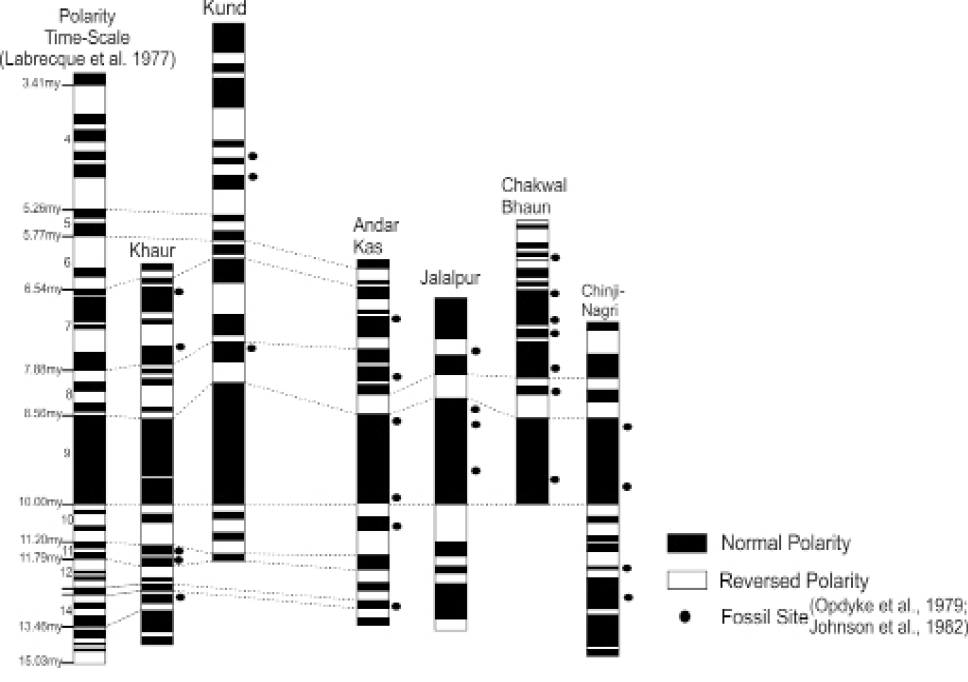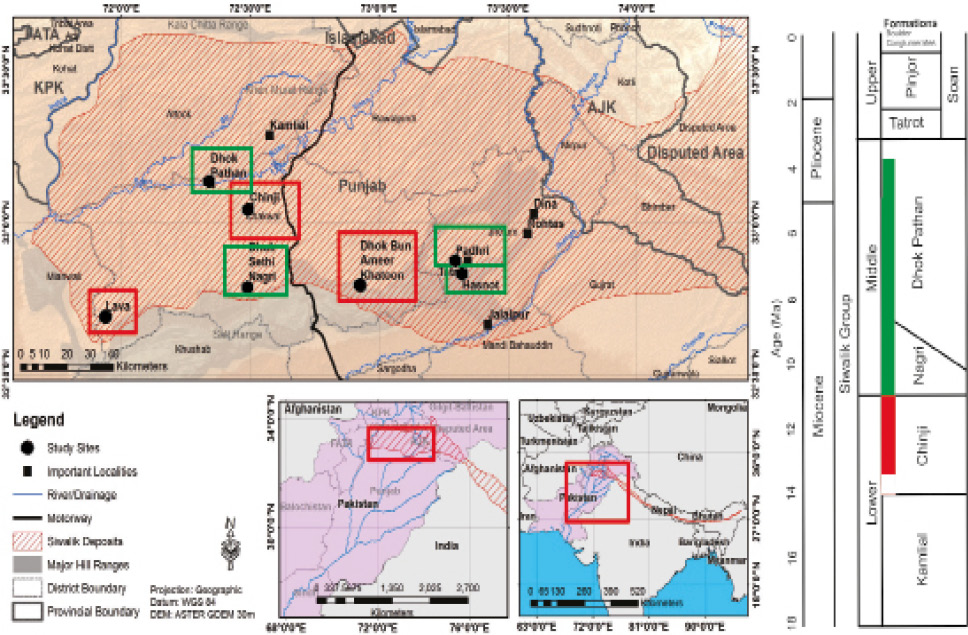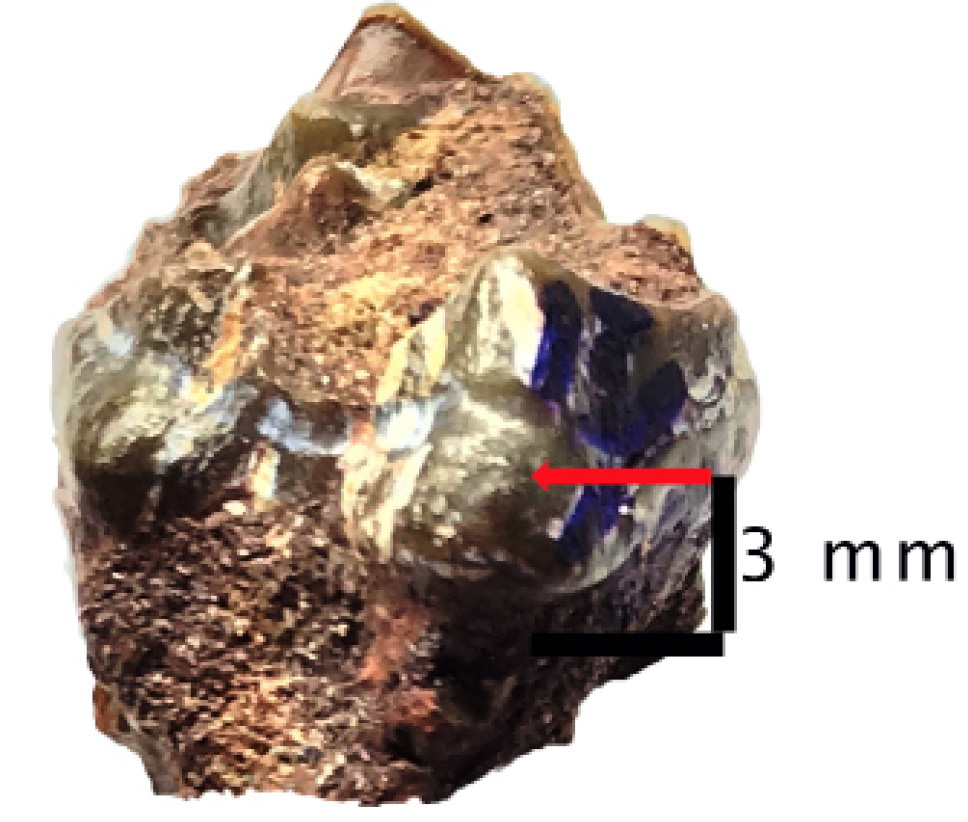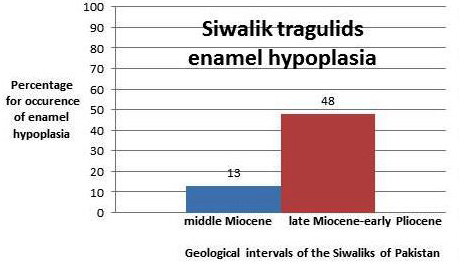First Report of Enamel Hypoplasia in Extinct Tragulids: A Marker Bearing on Habitat Change
First Report of Enamel Hypoplasia in Extinct Tragulids: A Marker Bearing on Habitat Change
Rana Manzoor Ahmad1,2, Abdul Majid Khan2*, Ayesha Iqbal2, Amtur Rafeh2, Muhammad Tahir Waseem2 and Muhammad Ameen2
The stratigraphy of the localities of the Siwaliks of Pakistan from where the tragulid material included in this study has been recovered. Reference sections are taken from Opdyke et al. (1979); Tauxe and Opdyke (1982) and Johnson et al. (1982).
The map of the Siwaliks of Pakistan along with the middle Miocene (highlighted by red color outlines) and the late Miocene-early Pliocene (highlighted by green color outlines) highly fossiliferous localities from where most of the tragulid material included in this LEH analysis has been collected. Boundary dates are according to Barry et al. (2002) and Dennell et al. (2006).
The photographic representation of a selected molar among the Siwalik tragulid molars having linear enamel hypoplasia. The mark of LEH is indicated by red arrow. The 3mm is the height of the observed LEH mark from the root crown junction.
Graphical representation of the comparative occurrence of enamel hypoplasia in the Siwalik tragulids of middle Miocene and late Miocene-Pliocene epoch.













